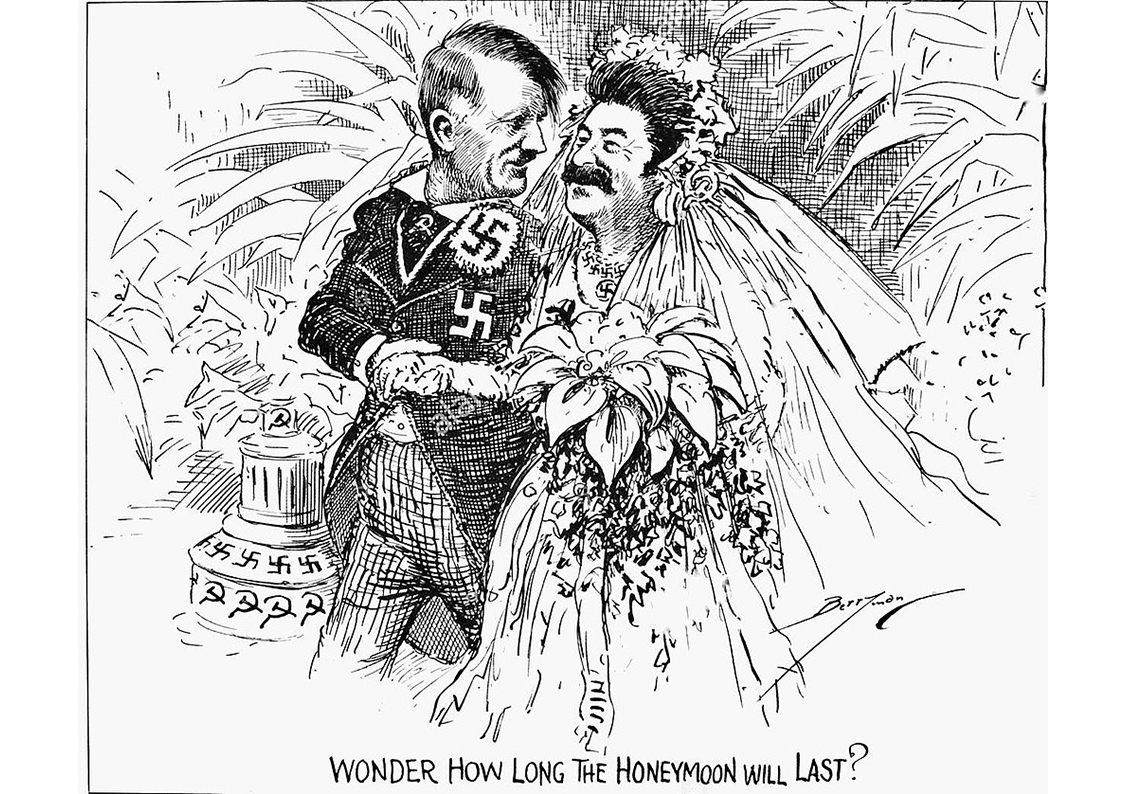On August 23, Europe commemorates the millions of people who fell victim to two totalitarian regimes of the 20th century – Nazism and Communism. This day was established by the European Parliament in 2009.
The memorial date was not chosen by chance, because it was on August 23, 1939, that the Non-Aggression Pact was signed between Nazi Germany and the USSR – an international treaty that went down in history as the Hitler-Stalin Pact or the Molotov-Ribbentrop Pact. In addition to the “visible” content for everyone, secret agreements were made during the signing of the Pact regarding the division of spheres of influence in Europe between the two totalitarian states.
The immediate consequence of this was the attack of Nazi Germany on Poland on September 1 of the same year and the beginning of World War II. The USSR, as an ally of Germany, supported the latter, both in the occupation of Poland and later, “satisfied” its territorial appetite by occupying part of the territory of other European states – Finland, Estonia, Latvia and Lithuania, as well as Romania.
For millions of people, August 23 will become a pretext for inevitable changes in their usual lives, the beginning of hardships, forced exile, deportation, and repressions.
Later, at the end of June 1941, the two totalitarian states would clash in a large-scale military conflict, the victims of which would be tens of millions of people; most of whom would be civilians. The German Nazis and their accomplices would use the German-Soviet war as a cover for the organized total murder of the Jews of Europe - the unprecedented crime of the Holocaust. The USSR would use the war against Nazism to cover up its own crimes - the deportation of the peoples of the Caucasus, the Crimeans and other ethnic groups of the Crimea.
After the capitulation of Nazi Germany, the world brought to justice part of the top leadership of the misanthropic Third Reich. In contrast, the leadership of the USSR, responsible for the outbreak of World War II and crimes against millions of people, was able to avoid its own Nuremberg. It is interesting that in the Russian-language Soviet version of the publication of the Nuremberg Trials, all references to the German-Soviet agreements of 1939 were removed. Only in the last years of the quasi-socialist empire were its citizens able to learn the truth about how the USSR “consistently fought for peace” on the eve of the greatest of wars.
For the countries of Central and Eastern Europe, which had to fall into the camp of the so-called “people’s democracy” after World War II, August 23 is a special day. In the struggle for liberation from Soviet control and occupation (in the case of Estonia, Latvia, Lithuania), the Hitler-Stalin Pact was the starting point of national enslavement. Therefore, liberation was supposed to begin with it. On August 23, 1989, the capitals of the three Baltic countries (Tallinn, Riga and Vilnius) were connected by the so-called “Baltic Way” – a human chain over 600 km long. It symbolized the memory of their own statehood, the attack on which began 50 years ago.
Ten years later, in 2009, Estonia and Latvia, as member states of the European Union, initiated the process of commemorating the victims of Nazi and communist totalitarianism at the pan-European level. On 3 July of the same year, the OSCE Parliamentary Assembly adopted the Resolution “Promoting Human Rights and Civil Liberties in the OSCE Area in the 21st Century”, which designated 23 August as the Pan-European Day of Remembrance for the Victims of Stalinism and Nazism.
Museum “Jewish Memory and Holocaust in Ukraine”, together with international partners, is preparing for presentation an exhibition dedicated to human destinies changed forever because of the decisions of August 23, 1939. So, stay tuned for our announcements.
Yehor Vradii

